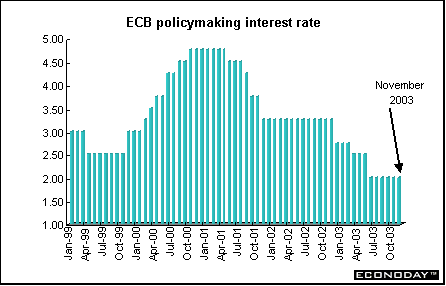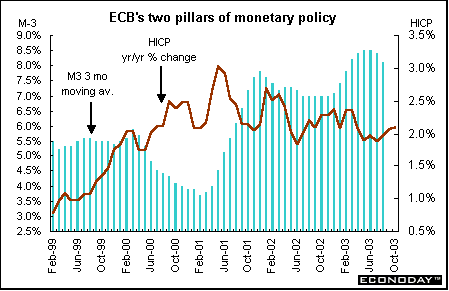

|
The European Central Bank (ECB) continues to establish itself and its inflation fighting credentials. Founded by the European Union, the ECB is empowered to set monetary policy for the 12 countries which make up the European Monetary Union. In 2002, the ECB's biggest challenge was the conversion of the national currencies (i.e. the deutschmark, franc, lira, drachma etc) to the euro for all day to day transactions. The ECB's governing council, which consists of 17 members representing the national central banks (Bank of France, Bundesbank, etc) performs tasks similar to that of the Federal Reserve Open Market Committee (FOMC). They make decisions affecting the availability and cost of money and credit in member countries. Both make decisions about interest rate and money supply growth targets - although their approach differs in the decision making process. Critics are vocal in complaining about the ECB's lack of transparency. The ECB does not publish minutes of their meetings but does hold press conferences usually after the first meeting of the month to explain its actions. The European Central Bank decides monetary policy and member national central banks implement it. Together these banks form the European System of Central Banks (ESCB). The president is Jean Claude Trichet, a former governor of the Bank of France, who began an eight year term on November 1, 2003. The Bank was patterned after the German Bundesbank and follows many of its way of doing business.
The ECB's prime objective is to maintain price stability through interest rate policies. The ECB makes decisions on interest rates by majority vote of its governing council as does the Federal Reserve. The council meets every other Thursday - just as the Bundesbank does - and more frequently than the FOMC but focuses on monetary policy only during the first meeting of the month. The main monetary instrument is the repurchase rate (repo).
The ECB has adapted two policy guides -
|
Currency • European Central Bank • Equities Markets

